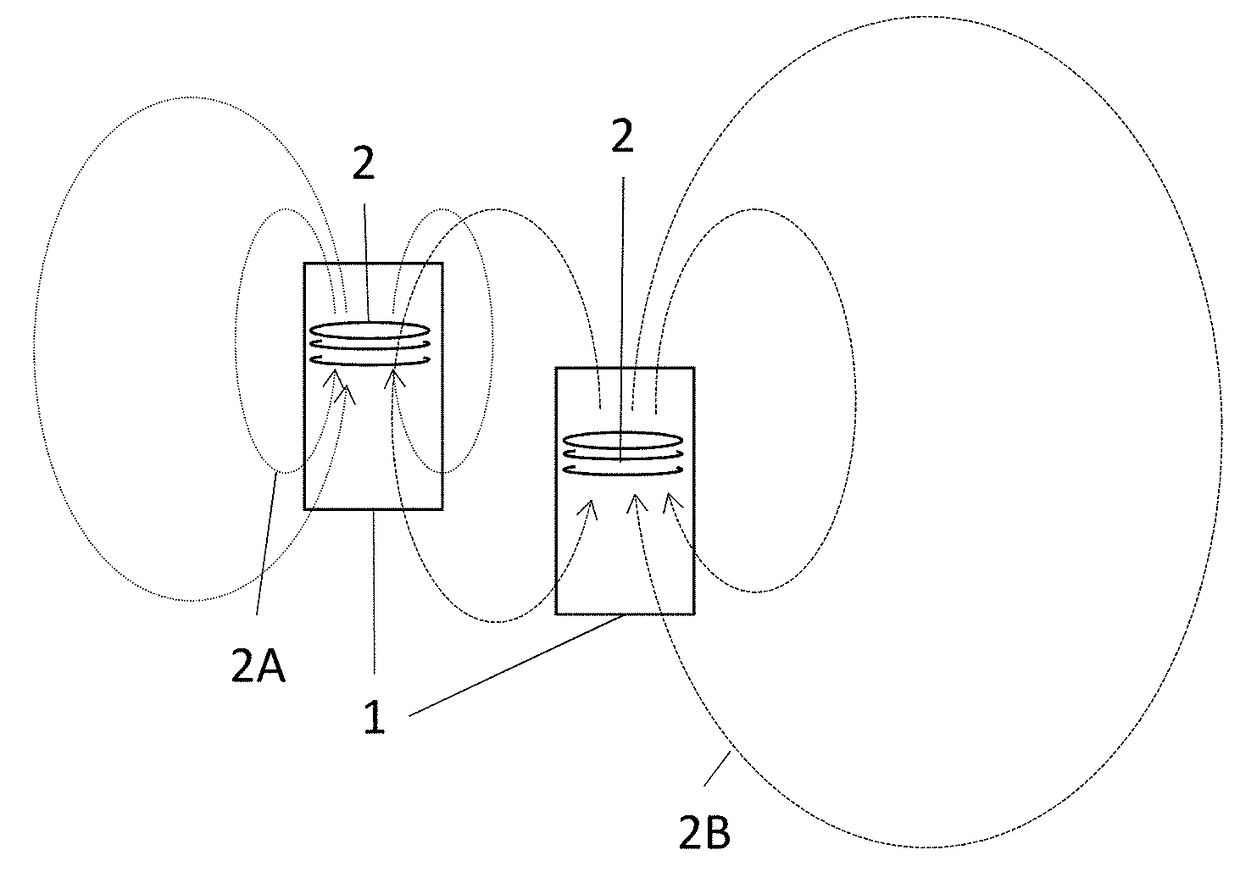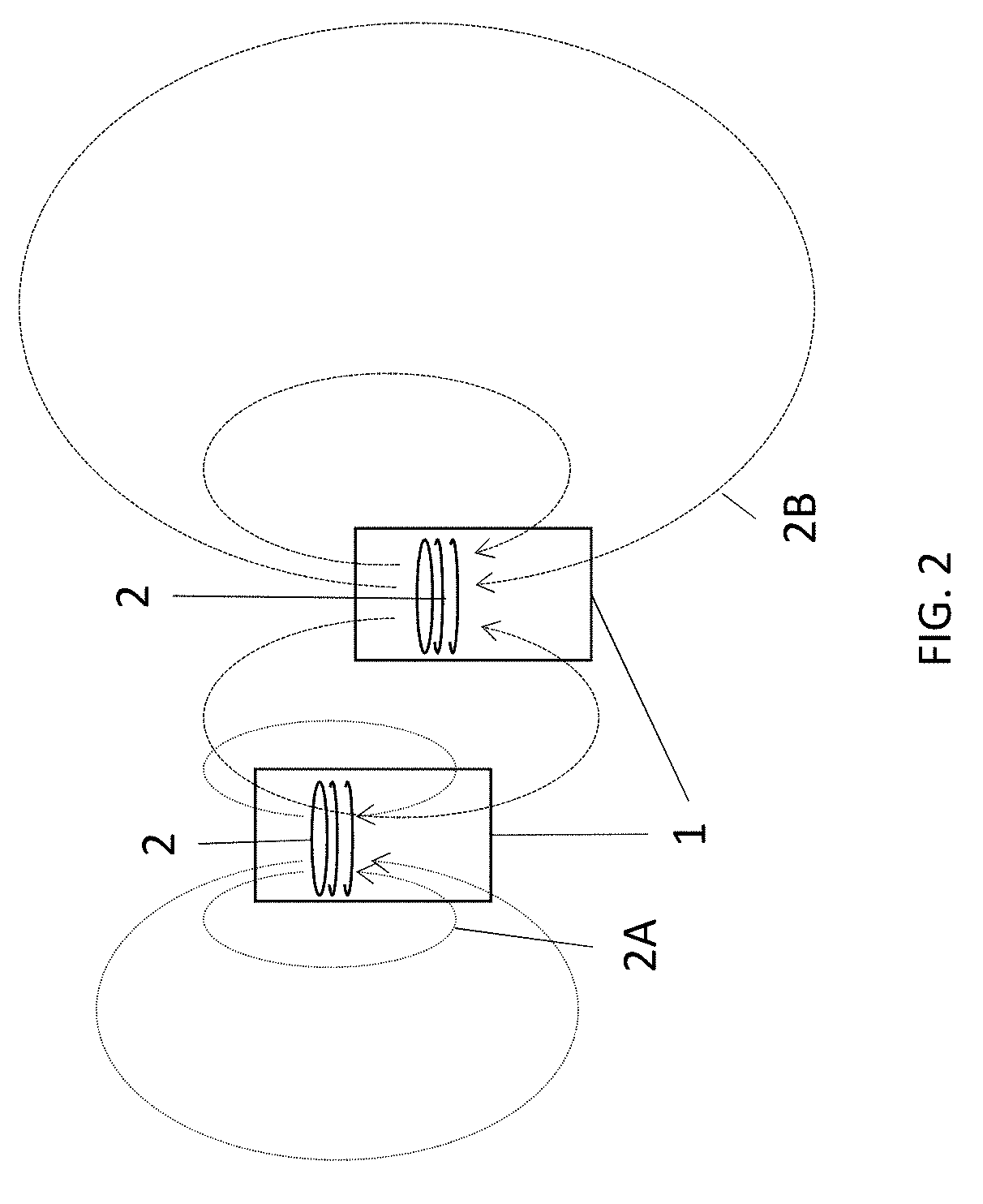Mutually calibrated magnetic imaging array
a magnetic imaging array and mutual calibration technology, applied in the field of magnetic imaging arrays, can solve the problems of tedious phantom-type approach, and achieve the effects of less cumbersome operation, convenient and fast array operation, and convenient transportation
- Summary
- Abstract
- Description
- Claims
- Application Information
AI Technical Summary
Benefits of technology
Problems solved by technology
Method used
Image
Examples
example 1
[0025]As an example, a simple magnetic imaging array made up of magnetic array devices 40, as described above, has been constructed out of two optically-pumped magnetometers (OPMs) 32, magnetic coils 31A, 31B, and 31C, and a computation unit 33, as shown in FIG. 4. Each OPM 32 measured the field in two nearly orthogonal directions. A schematic diagram of the imaging array is shown in FIG. 4. Three coils 31A, 31B, and 31C, were wrapped around each of the OPM magnetometers 32 in nearly orthogonal directions serving as three non-target sources. The relative positions and orientations of each coil with respect to the OPM magnetometer 32 it is attached to are measured carefully. In this way, the magnetic field of each of the dipolar sources was known relative to the magnetometer itself. Oscillating non-target magnetic fields were applied to the six dipoles at frequencies of 80 Hz, 81 Hz, 83 Hz, 84 Hz, 86 Hz, and 87 Hz, respectively. The fields were recorded continuously in each of the fo...
PUM
 Login to View More
Login to View More Abstract
Description
Claims
Application Information
 Login to View More
Login to View More - R&D
- Intellectual Property
- Life Sciences
- Materials
- Tech Scout
- Unparalleled Data Quality
- Higher Quality Content
- 60% Fewer Hallucinations
Browse by: Latest US Patents, China's latest patents, Technical Efficacy Thesaurus, Application Domain, Technology Topic, Popular Technical Reports.
© 2025 PatSnap. All rights reserved.Legal|Privacy policy|Modern Slavery Act Transparency Statement|Sitemap|About US| Contact US: help@patsnap.com



